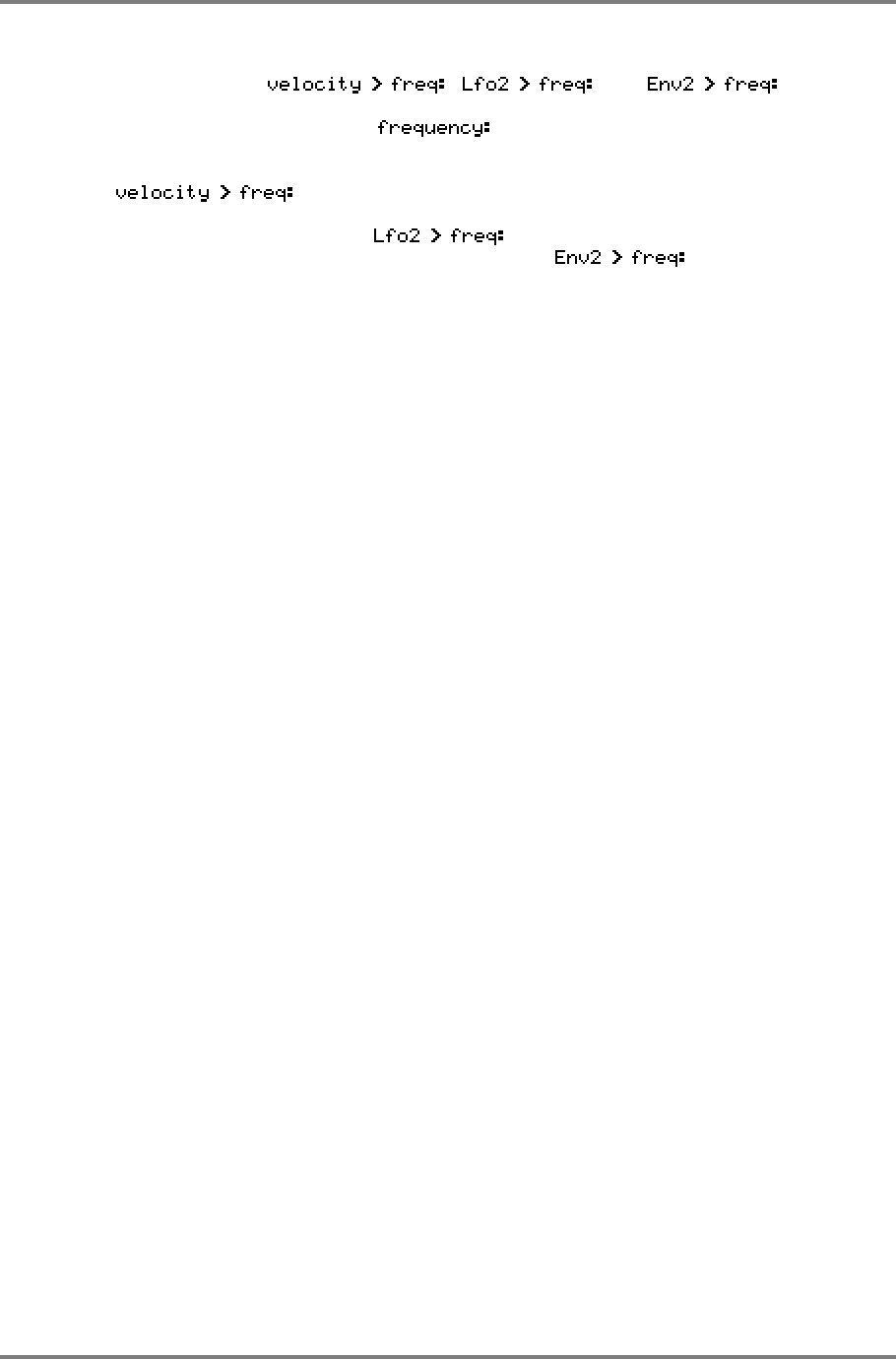
EDIT PROGRAM - SINGLE
CD3000XL OperatorÕs Manual Page 103
The next three parameters down the right hand side are the modulation inputs to the filter. The
defaults for these are , and respectively.
These may be mixed and the range for each modulation input is the usual +/-50. You will note
that for there to be any effect, the parameter should be set to something lower
than 99.
With set to a high positive value, you may use velocity to control tone
colour much like you would find on an acoustic instrument with louder notes yielding brighter
sounds and, of course, vice versa. may be used for filter sweep effects such as
flute tremolando or drastic resonant synth effects whilst is used for shaping the
tonal dynamics of the sound and restoring lost harmonic movement due to looping. The multi-
stages of ENV2 allow some interesting possibilities as we shall see in a moment. The other
options which you may select for modulating the filters are:
Modwheel This works much like pressure and moving the modwheel will cause the filter
cutoff to open and close. Use this for phrasing brass parts, perhaps, or for
special synth filter effects in a bass line or lead line.
Bend This works like pressure and modwheel and allows you to open and close the
filter by moving the pitch bend wheel or lever. This can be effective when
bending up into a note as the filter will open and sound brighter.
Pressure This may be used for expressive swells, particularly on brass sounds.
External This can select from footpedal, volume and breath for control of the filter
cutoff.
Key Although selectable as a mod source, it is not that worthwhile because this is
hardwired via the key follow parameter.
Lfo1 This allows you to emulate the natural tremolo of flutes, woodwind, brass and
other such instruments when set to small modulation amounts. When set to
large modulation amounts, classic synth filter sweeps can be achieved. That
LFO 1 can also be modulated leads to some very interesting synth sounds and
special effects.
Env1 On occasions, it is good to be able to have the filter’s tonal dynamics match
those of the amplitudes. One easy way to achieve this is, instead of copying
the amplitude envelope to the filters envelope, simply assign the amplitude
envelope ENV1 to the filter.
! Modwheel This and the other “!” controllers allow you to control the opening and closing
of filter cutoff at the point of note on. They don’t have any effect if these
controllers change through the course of the note but only when the note is
pressed.


















